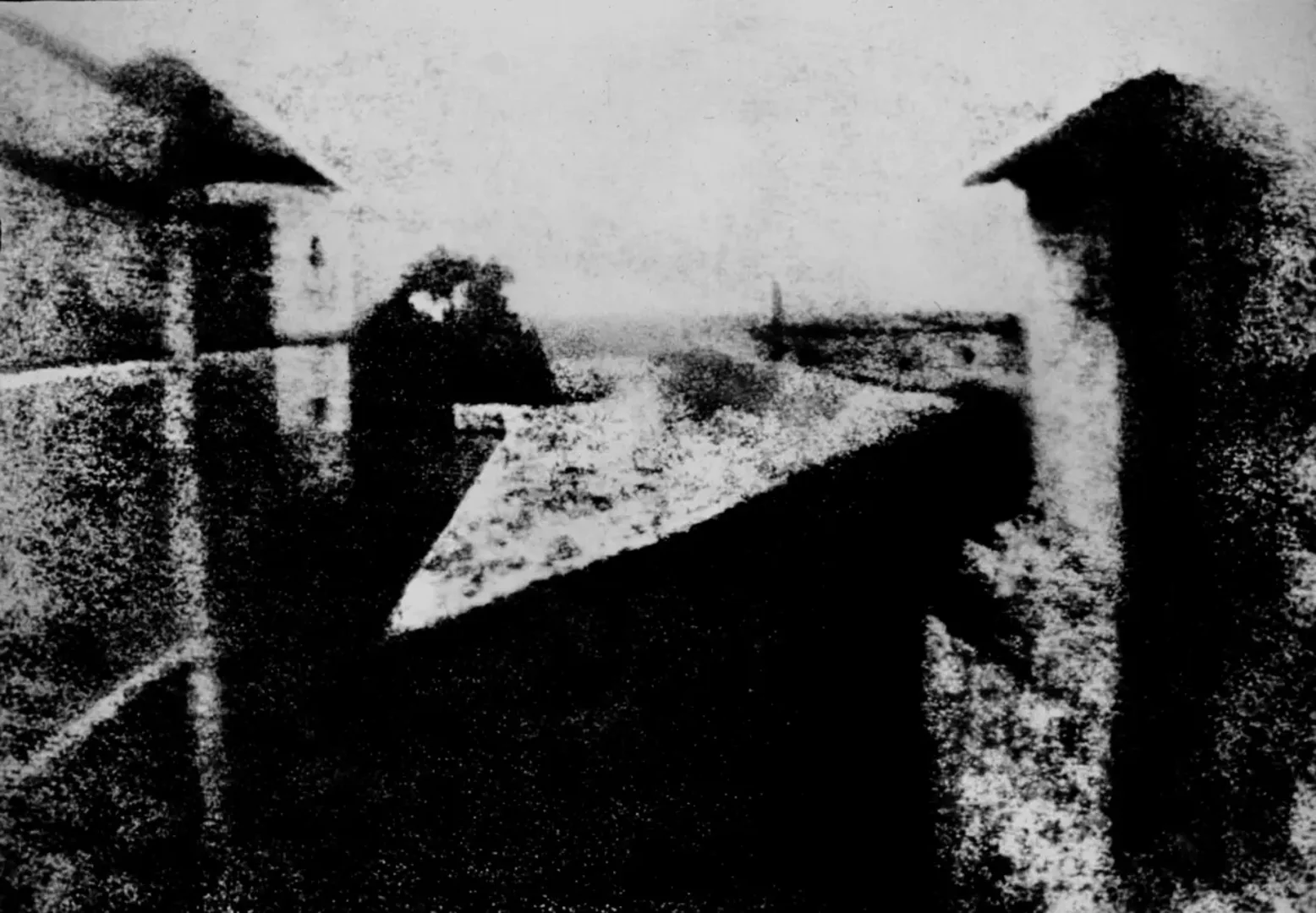In 1826 (or 1827), the French inventor Joseph Nisefort Niepce took a photograph that is now considered the world's first photograph. For this, he used the technique of heliography (from Greek "sun" + "to write").
The photograph "View from the Window in Le Gra," created by French inventor Joseph Nisephor Neps in 1826 or 1827, became the first surviving photograph in history that marked the beginning of the photography era. To create this image, Nieps used an experimental heliography technique by coating a metal plate with light-sensitive Judaea bitumen, which hardened under the influence of light.
The camera obscura, directed from the window of his house in the Burgundy village of Le Gra, captured the view of the roofs of neighboring buildings and the pear tree for an incredibly long time - from 8 hours to several days.
This blurred but recognizable image was a revolutionary achievement, proving for the first time the possibility of preserving the "light imprint." Although Nieps's technology was imperfect, it laid the foundation for the subsequent development of photography, inspiring his partner Louis Daher to create a more practical daguerreotype.
The only surviving copy of this historical photograph today is kept at the University of Texas. Modern studies of the photograph have disproved the initial assumption that it captured the dawn - shadow analysis showed that the filming was likely taken at noon.
This modest photograph, which the inventor himself simply called "Heliography," became the starting point for the entire subsequent history of photographic art, from film technology to the digital revolution, forever changing the way humanity fixed and perceived visual information.

